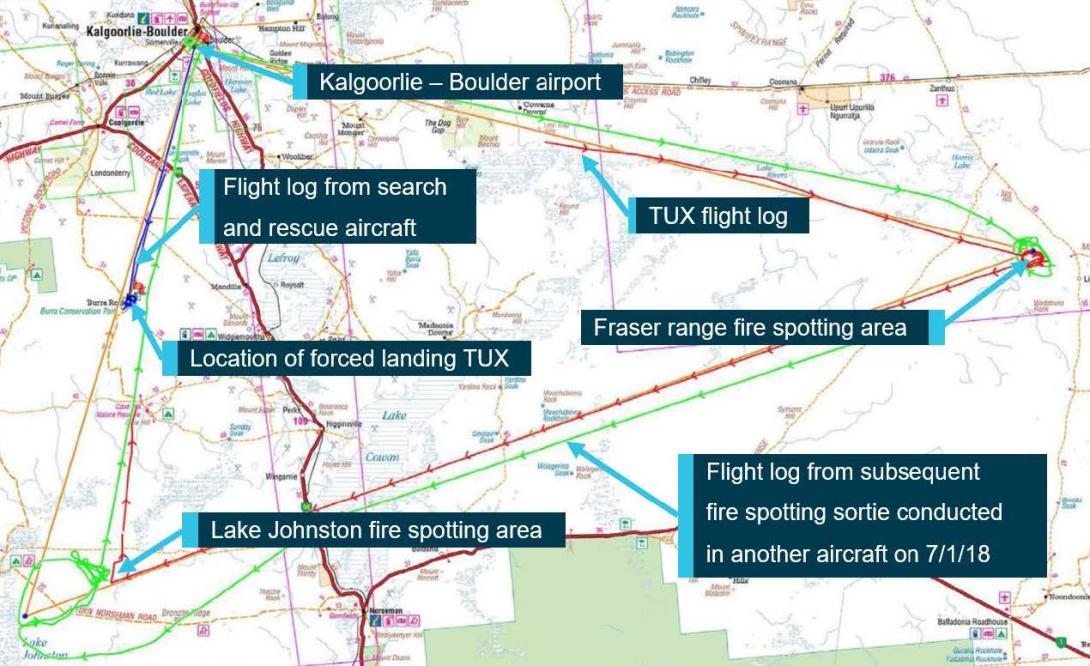
The forced landing of a Cessna 172 into scrubland south-west of Kalgoorlie Airport, Western Australia, following fuel exhaustion again highlights the need for continued pilot education on the risks and controls associated with fuel management.
The Cessna 172M, registration VH-TUX, had been tasked to conduct fire-spotting operations in the Lake Johnstone area near Kalgoorlie on 5 January 2018. During the flight, the engine speed began to steadily reduce toward idle. The pilot switched between fuel tanks and adjusted the mixture and throttle settings. This resulted in the engine speed momentarily increasing before returning to idle.
Preparing for a forced landing on a dirt road, the pilot realised the aircraft’s glide range would be insufficient and identified an area of less dense scrub and landed the aircraft with minimal damage.
The pilot’s flying instructor experience instructing student pilots on the procedures for an engine restart and practice forced landings likely aided in managing workload during the emergency and led to the successful forced landing.
The investigation found the pilot’s in-flight fuel management resulted in insufficient endurance to safely conduct the planned flight and the aircraft exhausting its useable fuel supply.
Fuel starvation and exhaustion events continue to be reported to the ATSB
The aircraft had recently been refitted with wings sourced from another Cessna 172M. The replacement wings were fitted with smaller capacity tanks of 144 litres, compared to the previous 182 litres. Despite a number of opportunities to identify the change to the aircraft’s endurance, the pilot, who had flown VH-TUX on numerous occasions prior to its fitment of new wings, did not detect the reduced fuel capacity.
During the accident fight, the pilot observed a steady decrease in the indications on the fuel gauge, but the pilot discounted the accuracy of the indications. The pilot’s in-flight fuel management was likely based on the expectation of the aircraft’s endurance, rather than crosschecking the expected fuel burn against the fuel burn achieved during flight at the 30-minute intervals required under the operator’s standard operating procedures.
Further, the pilot’s pre-flight planning was inconsistent with both the regulatory requirements for flight planning and preparation, and the operator’s own electronic flight bag administration and in-flight fuel management procedures.
Fuel starvation and exhaustion events continue to be reported to the ATSB. The ATSB’s safety message from this investigation the importance for pilots to continue to educate themselves on the risks and controls associated with fuel management.
Methods for cross-checking fuel on board before flight are published by the Civil Aviation Safety Authority in Civil Aviation Advisory Publication 234-1(2): Guidelines for aircraft fuel requirements.
Case studies for pilots to learn about fuel management related accidents have been published by the ATSB in Avoidable Accidents No. 5 – Starved and exhausted: Fuel management aviation accidents.
Read the report: Fuel exhaustion involving Cessna 172M, VH-TUX, 72 km south of Kalgoorlie-Boulder Airport, Western Australia, on 5 January 2018


